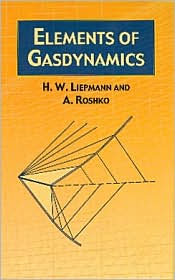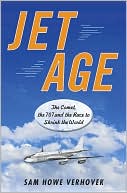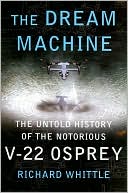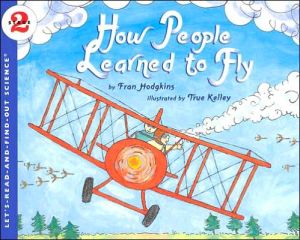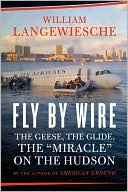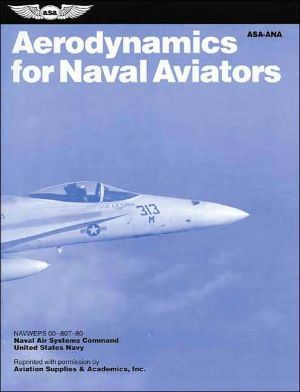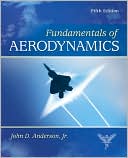Elements of Gas Dynamics
First-rate text covers introductory concepts from thermodynamics, one-dimensional gas dynamics and one-dimensional wave motion, waves in supersonic flow, flow in ducts and wind tunnels, methods of measurement, the equations of frictionless flow, small-perturbation theory, transonic flow, and much more. For advanced undergraduate or graduate physics and engineering students.
Search in google:
First-rate text covers introductory concepts from thermodynamics, one-dimensional gas dynamics and one-dimensional wave motion, waves in supersonic flow, flow in ducts and wind tunnels, methods of measurement, the equations of frictionless flow, small-perturbation theory, transonic flow, and much more. For advanced undergraduate or graduate physics and engineering students with at least a working knowledge of calculus and basic physics. Exercises demonstrate application of material in text. Booknews Intended for aeronautics students, this text will also be helpful to practicing engineers and scientists who work on problems involving the aerodynamics of compressible fluids. The book covers general principles of gas dynamics to provide a working understanding of the essentials of gas flow, explaining introductory concepts from thermodynamics including entropy, reciprocity relations, equilibrium conditions, the law of mass action and condensation, methods of measurement, transonic flow, and effects of viscosity and conductivity. This is an unabridged republication of a work published by John Wiley & Sons, Inc., New York, 1957. Annotation c. Book News, Inc., Portland, OR (booknews.com)
Chapter I. Concepts from thermodynamics 1.1 Introduction 1.2 Thermodynamic Systems 1.3 Variables of state 1.4 The first principal law 1.5 Irreversible and reversible processes 1.6 Perfect Gases 1.7 The first Law applied to reversible processes. Specific Heats 1.8 The first Law applied to irreversible processes 1.9 The concept of Entropy. The Second Law 1.10 The Canonical equation of state. Free energy and free enthalpy 1.11 Reciprocity relations 1.12 Entropy and transport processes 1.13 Equilibrium conditions 1.14 Mixtures of perfect gases 1.15 The law of mass action 1.16 Dissociation 1.17 Condensation 1.18 Real Gases in Gasdynamics Chapter 2. One-dimensional gasdynamics 2.1 Introduction 2.2 The continuity equation 2.3 The energy equation 2.4 Reservoir conditions 2.5 Euler's equation 2.6 The momentum equation 2.7 Isentropic conditions 2.8 Speed of sound; mach number 2.9 The Area-velocity relation 2.10 Results from the energy equation 2.11 Bernoulli equation; dynamic pressure 2.12 Flow at constant Area 2.13 The normal shock relations for a perfect Gas Chapter 3. One-dimensional Wave motion 3.1 Introduction 3.2 The propagating shock wave 3.3 One-dimensional isentropic equations 3.4 The Acoustic equations 3.5 Propagation of Acoustic Waves 3.6 The speed of sound 3.7 Pressure and Particle Velocity in a sound wave 3.8 "Linearized" shock tube 3.9 Isentropic Waves of Finite Amplitude 3.10 Propagation of Finite Waves 3.11 Centered Expansion Wave 3.12 The Shock Tube Chapter 4. Waves in supersonic flow 4.1 Introduction 4.2 Oblique shock waves 4.3 Relation between beta and theta 4.4 Supersonic flow over a wedge 4.5 Mach lines 4.6 Piston analogy 4.7 Weak oblique shocks 4.8 Supersonic compression by turning 4.9 Supersonic expansion by turning 4.10 The Prandtl-Meyer function 4.11 Simple and nonsimple regions 4.12 Reflection and intersection of oblique shocks 4.13 Intersection of Shocks of the same family 4.14 Detached shocks 4.15 Mach reflection 4.16 Shock-expansion theory 4.17 Thin airfoil theory 4.18 Flat lifting wings 4.19 Drag reduction 4.20 The Hodograph Plane 4.21 Cone in supersonic flow Chapter 5. Flow in ducts and wind tunnels 5.1 Introduction 5.2 Flow in Channel of Varying Area 5.3 Area Relations 5.4 Nozzle Flow 5.5 Normal Shock recovery 5.6 Effects of second throat 5.7 Actual performance of wind tunnel diffusers 5.8 Wind tunnel pressure ratio 5.9 Supersonic wind tunnels 5.10 Wind tunnel Characteristics 5.11 Compressor Matching 5.12 Other wind tunnels and testing methods Chapter 6. Methods of measurement 6.1 Introduction 6.2 Static pressure 6.3 Total pressure 6.4 Mach number from pressure measurements 6.5 Wedge and cone measurements 6.6 Velocity 6.7 Temperature and Heat transfer measurements 6.8 Density measurements 6.9 Index of refraction 6.10 Schlieren system 6.11 The knife edge 6.12 Some practical considerations 6.13 The shadow method 6.14 Interference method 6.15 Mach-Zehnder Interferometer 6.16 Interferometer Techniques 6.17 X-Ray absorption and other methods 6.18 Direct measurement of skin friction 6.19 Hot-wire probe 6.20 Shock tube instrumentation Chapter 7. The equations of frictionless flow 7.1 Introduction 7.2 Notation 7.3 The equation of continuity 7.4 The momentum equation 7.5 The energy equation 7.6 The eulerian derivative 7.7 Splitting the energy equation 7.8 The total enthalpy 7.9 Natural coordinates. Crocco's theorem 7.10 Relation of vorticity to circulation and rotation 7.11 The velocity potential 7.12 Irrotational flow 7.13 Remarks on the equations of motion Chapter 8. Small-perturbation theory 8.1 Introduction 8.2 Derivation of the Perturbation equations 8.3 Pressure coefficient 8.4 Boundary conditions 8.5 Two-dimensional flow past a wave-shaped wall 8.6 Wavy wall in supersonic flow 8.7 Supersonic thin airfoil theory 8.8 Planar flows Chapter 9. Bodies of revolution. Slender body theory 9.1 Introduction 9.2 Cylindrical coordinates 9.3 Boundary conditions 9.4 Pressure coefficient 9.5 Axially symmetric flow 9.6 Subsonic flow 9.7 Supersonic flow 9.8 Velocities in the Supersonic field 9.9 Solution for a Cone 9.10 Other meridian shapes 9.11 Solution for Slender Cone 9.12 Slender Body Drag 9.13 Yawed body of revolution in supersonic flow 9.14 Cross-flow boundary conditions 9.15 Cross-flow solutions 9.16 Cross flow for slender bodies of revolution 9.17 Lift of slender bodies of revolution 9.18 Slender body theory 9.19 Rayleigh's formula Chapter 10. The similarity rules of high-speed flow 10.1 Introduction 10.2 Two-dimensional linearized flow. Prandtl-Glauert and Göthert rules 10.3 Two-dimensional transonic flow. von Kármán's rules 10.4 Linearized axially symmetric flow 10.5 Planar flow 10.6 Summary and application of the similarity laws 10.7 High mach numbers. Hypersonic similarity Chapter 11. Transonic flow 11.1 Introduction 11.2 Definition of the transonic range 11.3 Transonic flow past wedge sections 11.4 Transonic flow past a cone 11.5 Transonic flow past smooth two-dimensional shapes. The question of shock-free flow 11.6 The hodograph transformation of the equations Chapter 12. The method of characteristics 12.1 Introduction 12.2 Hyperbolic equations 12.3 The compatibility relation 12.4 The computation method 12.5 Interior and boundary points 12.6 Axially symmetric flow 12.7 Nonisentropic flow 12.8 Theorems about Plane flow 12.9 Computation with weak, finite waves 12.10 Interaction of waves 12.11 Design of supersonic nozzles 12.12 Comparison of characteristics and waves Chapter 13. Effects of viscosity and conductivity 13.1 Introduction 13.2 Couette flow 13.3 Recovery temperature 13.4 Velocity distribution in couette flow 13.5 Rayleigh's problem. The diffusion of vorticity 13.6 The boundary-layer concept 13.7 Prandtl's equations for a flat plate 13.8 Characteristic results from the boundary-layer equation 13.9 The displacement effect of the boundary layer. Momentum and energy integrals 13.10 Change of variables 13.11 Boundary layers of profiles other than a flat plate 13.12 Flow through a shock wave 13.13 The Navier-Stokes equations 13.14 The turbulent boundary layer 13.15 Boundary-layer effects on the external flow field 13.16 Shock-wave boundary-layer interaction 13.17 Turbulence 13.18 Couette flow of a dissociating gas Chapter 14. Concepts from gaskinetics 14.1 Introduction 14.2 Probability conc 14.9 Shear viscosity and heat conduction 14.10 Couette flow of a highly rarefied gas 14.11 The concepts of slip and accommodation 14.12 Relaxation effects of the internal degrees of freedom 14.13 The limit of continuum theory Exercises; Selected references; Tables1. Critical Data and characteristic temperatures for several gases2. Flow parameters versus M for Subsonic flow3. Flow parameters versus M for supersonic flow4. Parameters for shock flow5. Mach number and Mach angle versus Prandtl-Meyer function Charts1, 2 Oblique shock chart Appendix, Index
\ Intended for aeronautics students, this text will also be helpful to practicing engineers and scientists who work on problems involving the aerodynamics of compressible fluids. The book covers general principles of gas dynamics to provide a working understanding of the essentials of gas flow, explaining introductory concepts from thermodynamics including entropy, reciprocity relations, equilibrium conditions, the law of mass action and condensation, methods of measurement, transonic flow, and effects of viscosity and conductivity. This is an unabridged republication of a work published by John Wiley & Sons, Inc., New York, 1957. Annotation c. Book News, Inc., Portland, OR (booknews.com)\ \
